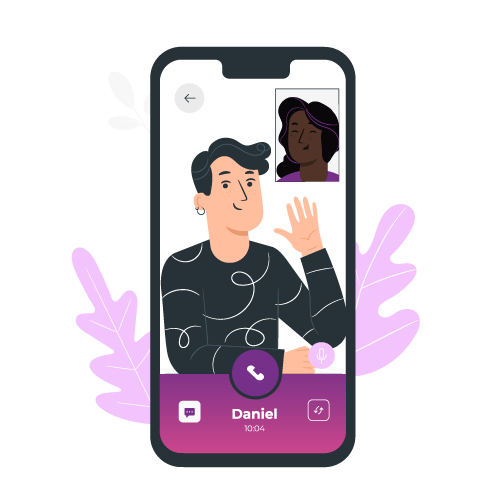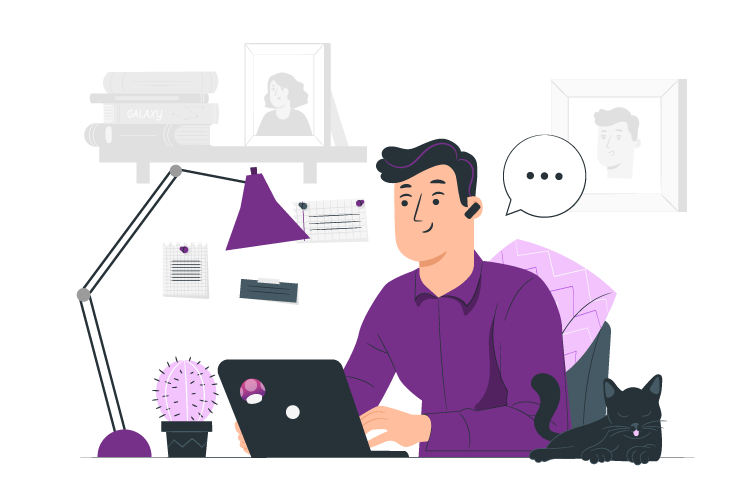
Trump Your Competition as the STAR Candidate With This Simple Hack.
Situation | Task | Action | Results
Learn how to use this technique to get an interview through a savvy CV, and beat your competition to a job with well prepared interview answers.
An overview of this article: As the nation adopts video conferencing as a counter measure to the COVID-19 pandemic. AL Solutions looks at the pros and pitfalls of this virtual venture, and discuss why some companies are falling victim to an interview mistake that is costing them the best talent.
How’s your 2020 been? For many, the new decade was an offering of hopeful optimism in which we could all reset and restart. But it seems the newborn decade has had more than its fair share of teething troubles. We’ve seen the globe lit ablaze with wildfire, royal romantic escapes, the Black Lives Matter movement, and the planet put into lockdown as the COVID-19 pandemic pauses the population. With all this happening the world of business has done all it can to adapt, namely adopting video conferencing. In this article, we’ll discuss the serge into video calling, its pros and pitfalls, and the one interview mistake many are falling into as these changes take place.
ZOOM! If I asked you what Zoom was in 2019, what would you have said? Chances are the company discovered in 2011 wouldn’t be the first thing that sprung to mind. Fast forward to late 2020, and not only would it be the first thing you think of, but you might have used it several times this week. And if that’s true, you’re not the only one. A little disclaimer here, Zoom wasn’t doing badly before the pandemic, but these numbers give you an idea of how it’s profited:

In short, Zoom (amongst others) has allowed the world to communicate while being locked inside their homes. The numbers suggest COVID-19 was pivotal to the recent colossal success of the company. However, when we look at some earlier figures, the more prudent of us might have already taken some interest:

Admittedly, COVID-19 has been a catalyst to its success, yet Zoom, Microsoft Teams and others, offer a wealth of benefits to users. Let’s say you have to attend an interview for a new role several miles away on a Thursday afternoon (around 6 pm). With a Zoom call, rather than a face to face meeting, you don’t have to worry about travel, and if you can get home before 6 pm, you don’t have to take any time off. You’ve saved time and money. It’s proven to be reliable, and if the employee has to make a last-minute change, it won’t disrupt your schedule too much.
There are benefits for the employer, too. Alongside, time-effective, flexible and reliable, they can also record the interview for later review and send it to others to analyse at a convenient time. Arguably, with or without a global pandemic, video interviewing always offered these useful perks. It begs the question why didn’t we adopt it sooner? One reason is the lag in a world where science is struggling to keep up with its close friend technology; we can foresee the implication of adopting these technologies on a mass scale without thorough testing.

There’s limited research on the use of video conference against interviewing in-person. Yet using Zoom to host a conversation is another step away from intimacy and human interaction. Nonetheless, in 2013 McMaster University released a study which did just that. ‘Video Killed the Interview Star’ presented evidence that “job applicants interviewed through video conferencing come across as less likeable.” They go on to propose that face to face meets were more likely to conclude in hires. Gianpiero Petriglieri, an associate professor at ‘Insead’, continued on this theme when interviewed by BBC Worklife about the shortcomings of video calls.
He explains that our brains are having to work harder to process non-verbal cues like facial expressions, the tone and pitch of the voice, and body language. He proceeds to express his concern at a dissonance arriving because “our minds are together when our bodies feel we’re not.” A 2014 study undertaken by German academics exhibited that delays on conferencing systems, even delays of 1.2 seconds, made people perceive the responder negatively. Okay, time-out. At this point, we’ve distinctly determined both clear pros and cons to the new technology that has swept HR departments almost as fast as COVID. Though, given the circumstances, virtually all businesses are using video conferences to interview anyway. So why are some companies landing top talent over others, and what interview mistake is costing the unwitting others? Let me explain using the hypothetical example of Jeff.

Jeff is a loyal A-grade employee who’s served a tech company for 10+ years. He has a wealth of experience, leadership skills and would be an asset to any company. Jeff’s looking to take the next big step in his career, and join a new younger organisation in the hope of imparting knowledge and driving profits. A dream job arrives – whether this opportunity found Jeff via an agency or internal TA team is irrelevant – they can offer everything he wants and more! The startup cloud-based service has just gone public and is taking the market by storm. They have been searching furiously for the perfect person and are thrilled to be in touch, as is Jeff. They organise a video conference call, talk for 2 hours and 45 minutes (even though 2 hours was the allotted time). Later that week, after some deliberation and the recorded interview receiving validation from several senior employees, they decide to offer Jeff. Jeff sleeps on the offer, then declines.
Why!? It was the perfect match. The problem here was the employer jumped the gun. The process was too quick, and they offered the candidate too soon. When someone has served a company for as long as Jeff, a change like this is life-altering. Just like you wouldn’t get married to someone you’ve only just met, rushing the process might scare a candidate from changing roles. Making a move of this magnitude should be a trust-building process, with a little seduction thrown in. In this instance, an initial test, another interview stage, or meeting more of the team would have scaled the importance of the opportunity. In this example, the tech company decreased the value of the process by making it too short. To Jeff, it was too much too soon, and the offer was coming from a desperate hand.
However, there is a reversal to this law. In the instance you have a ‘hot’ candidate, say a freelance worker who’s looking for their next 6-month contract. A fast interview process which involves a single Zoom interview is perfect. Moreover, if a candidate is looking to move fast, then it’s in your best interest to do the same; someone made redundant by COVID might go with a competitor because they offered before your 2nd interview. The trick here is understanding your candidates and tailoring your interview process to their situation.

Most recruiters will do their best to shorten the interview process. For a standard agency, a client suggesting a one-stage process might be enough to make their mouth water. At AL Solutions, we speak with pharmaceutical specialists in the biometrics and clinical sectors and always carry out a detailed qualification call. In these, we can access the situation and understand which interview process will best help them to acknowledge a client as offering a profitable and desirable opportunity. We’ve found on several occasions, it’s been crucial to add an interview stage in, and by lengthening the process, the candidate feels assured the company, and opportunity, are safe and appropriate.
We also advise candidates of the interview process regularly and inform them when our clients are likely to put forward an offer. If you don’t want to miss out on a candidate but feel they are showing a lack of investment, you might increase the interview processes to two stages but do this across two days. Better still, you could hold two interviews in a single day. Please note, if you are to do this, we recommend you leave enough time between the interview for your candidate to speak with the recruiter. At this point, they can resolve any concerns or unanswered questions before heading in for round 2.
The more flexible you can be with the candidate, the more likely you are to seal the deal. If you are working with agencies, make sure they are doing their part in managing expectations – for candidates and clients. If you listen to the needs, access the situation and tailor your interview process to suit it, there’s no reason you’ll miss out on to the competition.
Thanks for reading!

Situation | Task | Action | Results
Learn how to use this technique to get an interview through a savvy CV, and beat your competition to a job with well prepared interview answers.

Since the turn of the technological age, it’s never been easier to work remotely. So does your company have flex appeal? Sit back and take notes, because after reading this you’ll be able to pitch to your manager why flex appeal, is the real deal.
Find out the shocking truth of hiring a toxic employee, as we discover it’s more than just money that could be at stake, especially for small to medium-size businesses.
About AL Solutions
We understand that the future of medicine starts with today’s talent. So it’s become our mission to connect client and candidates across the globe through a seamless service. We find the people; you find the cure.
Useful Links
Contact us
18 King William St,
London EC4N 7BP
+44 (0) 203 778 0909
office@alsolutions.co.uk
© 2023 AL Solutions | +44 (0) 203 778 0909 | office@alsolutions.co.uk
| Cookie | Duration | Description |
|---|---|---|
| cookielawinfo-checkbox-analytics | 11 months | This cookie is set by GDPR Cookie Consent plugin. The cookie is used to store the user consent for the cookies in the category "Analytics". |
| cookielawinfo-checkbox-functional | 11 months | The cookie is set by GDPR cookie consent to record the user consent for the cookies in the category "Functional". |
| cookielawinfo-checkbox-necessary | 11 months | This cookie is set by GDPR Cookie Consent plugin. The cookies is used to store the user consent for the cookies in the category "Necessary". |
| cookielawinfo-checkbox-others | 11 months | This cookie is set by GDPR Cookie Consent plugin. The cookie is used to store the user consent for the cookies in the category "Other. |
| cookielawinfo-checkbox-performance | 11 months | This cookie is set by GDPR Cookie Consent plugin. The cookie is used to store the user consent for the cookies in the category "Performance". |
| viewed_cookie_policy | 11 months | The cookie is set by the GDPR Cookie Consent plugin and is used to store whether or not user has consented to the use of cookies. It does not store any personal data. |